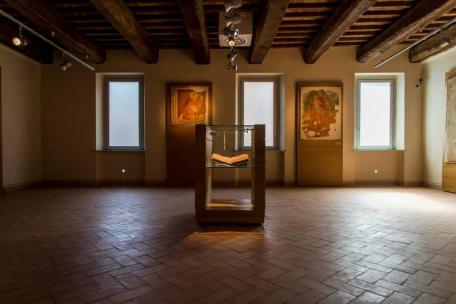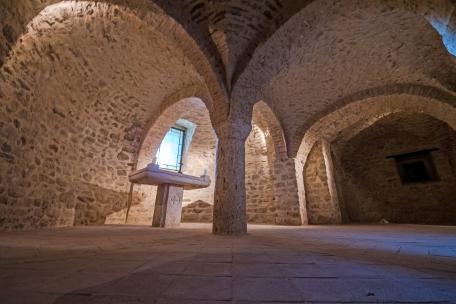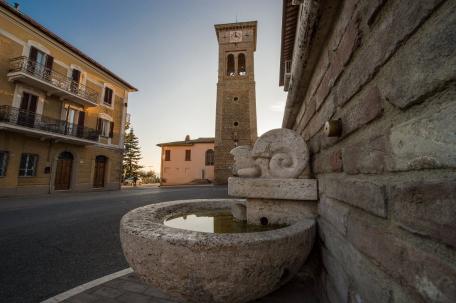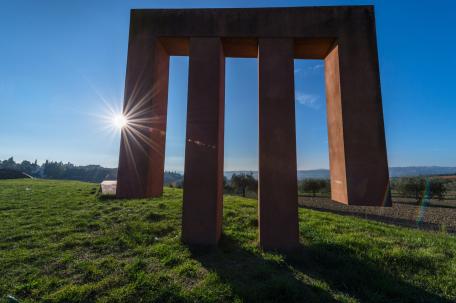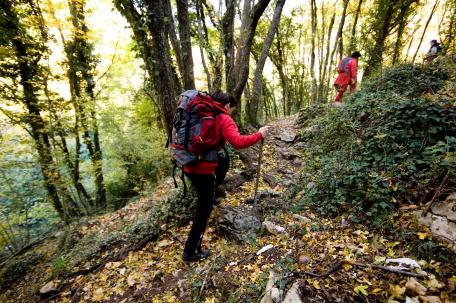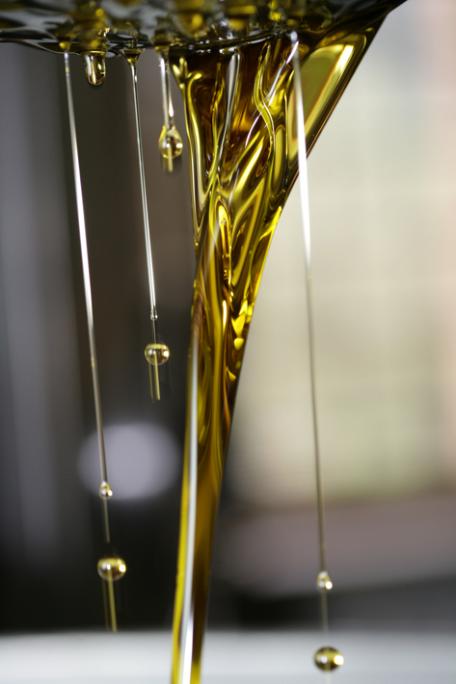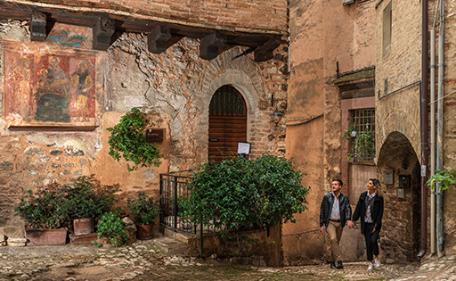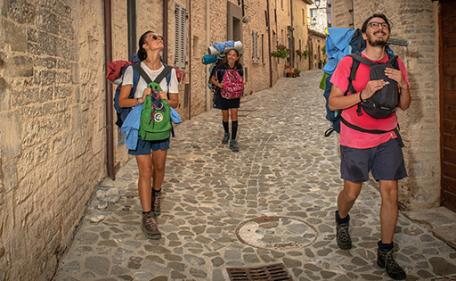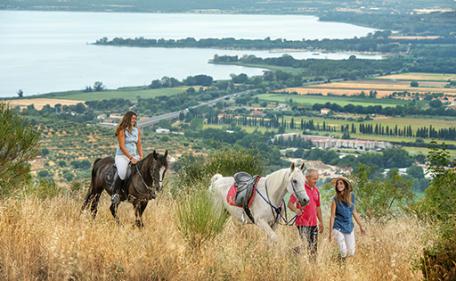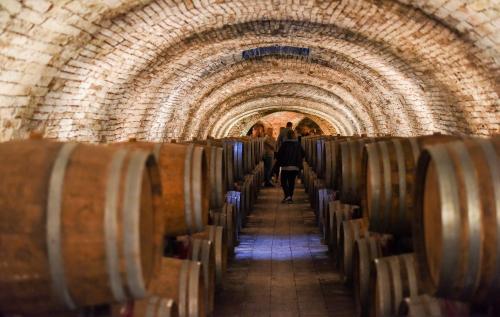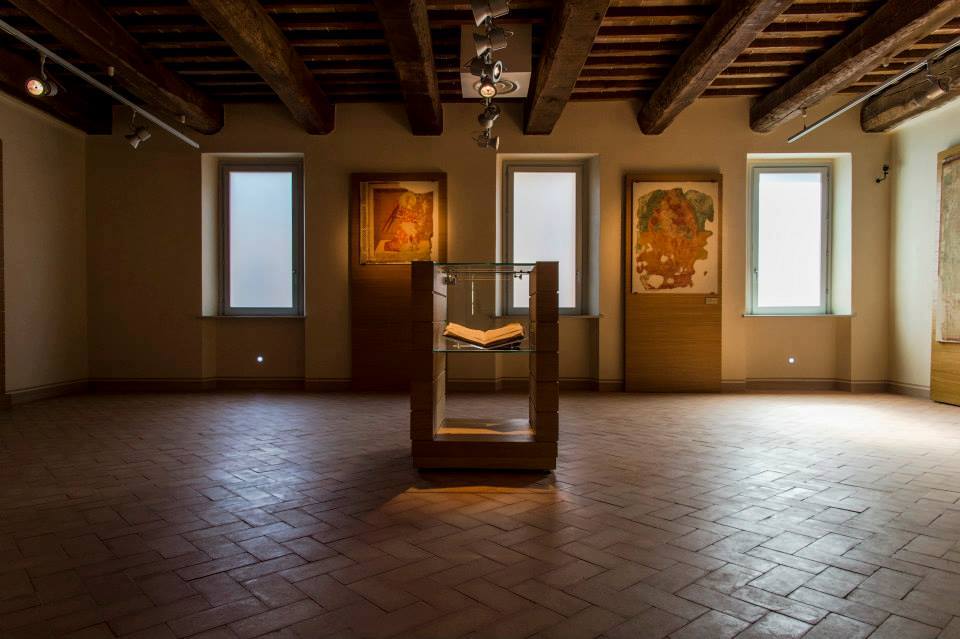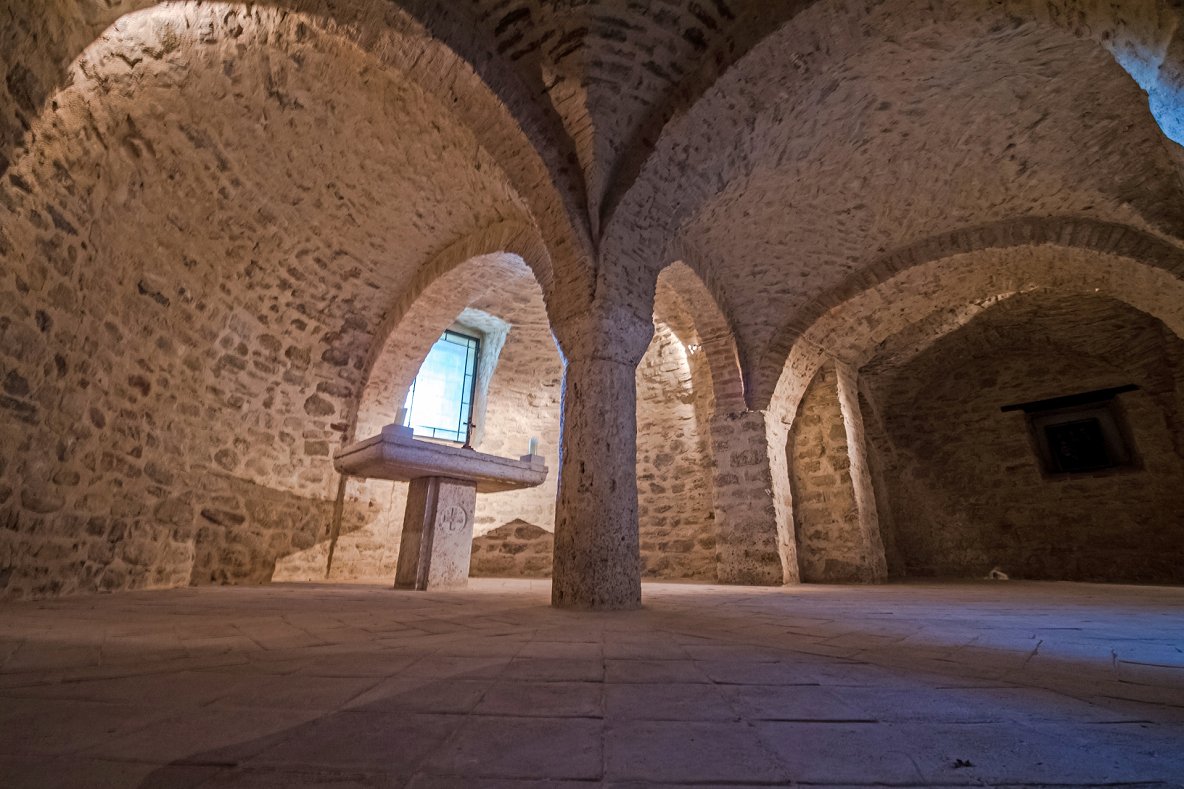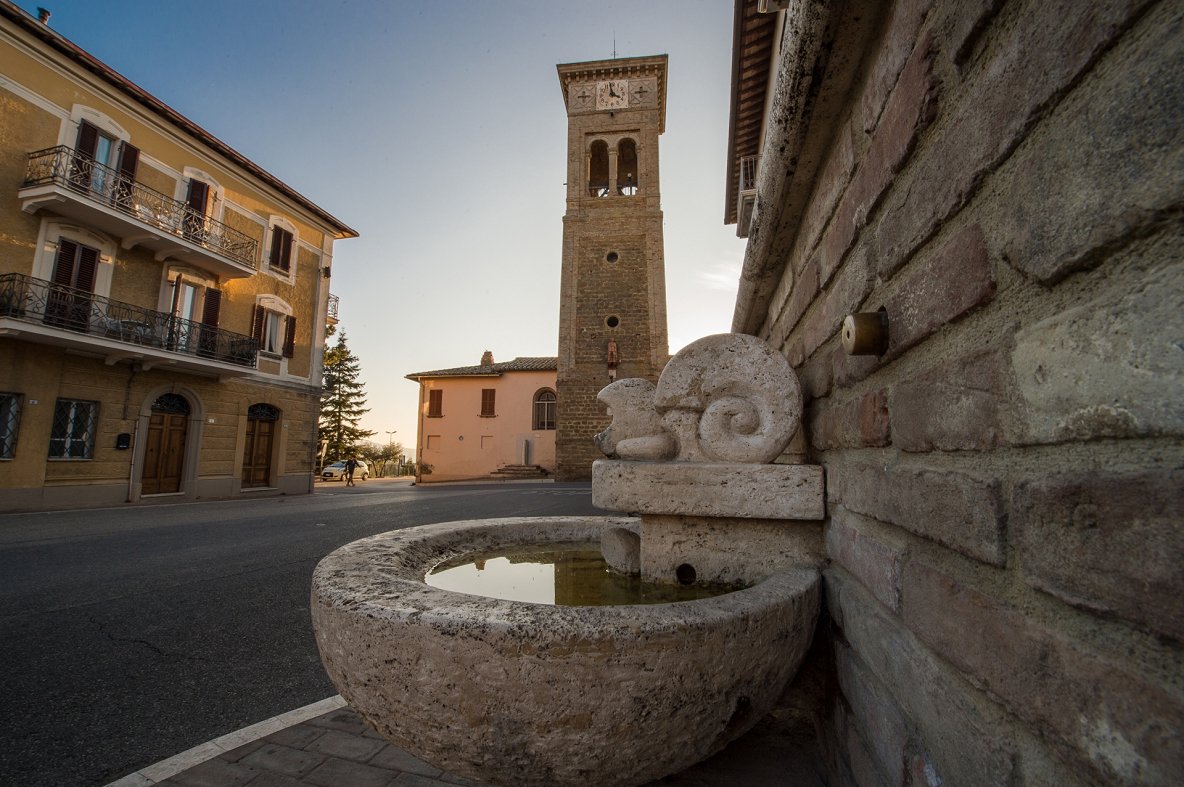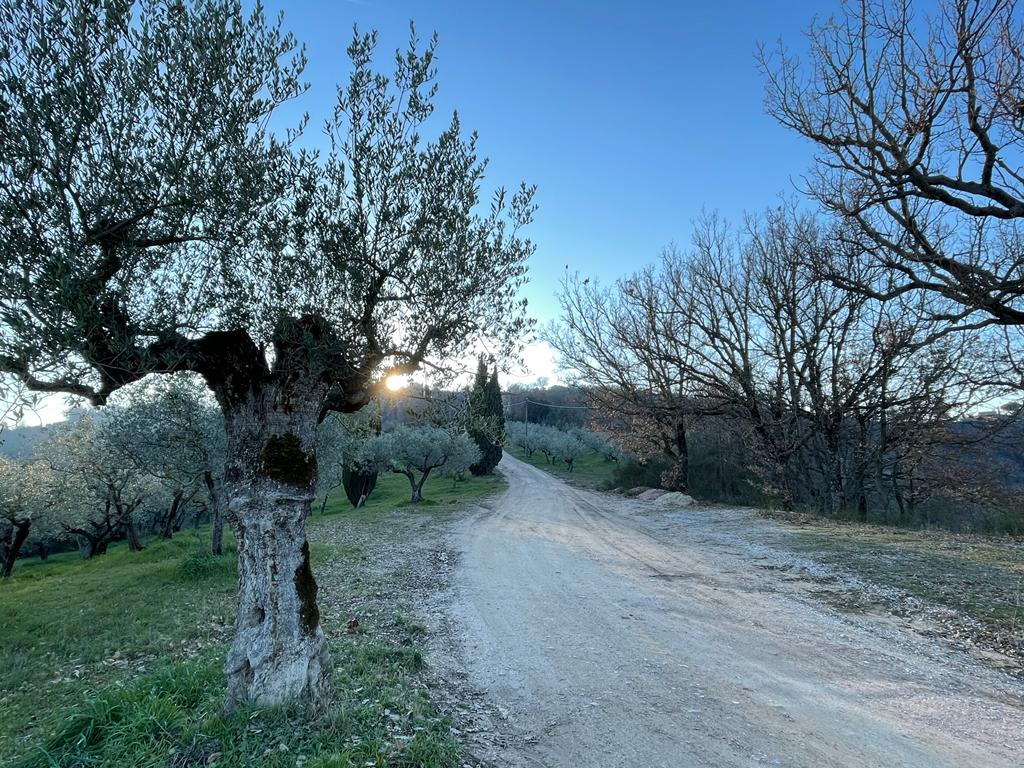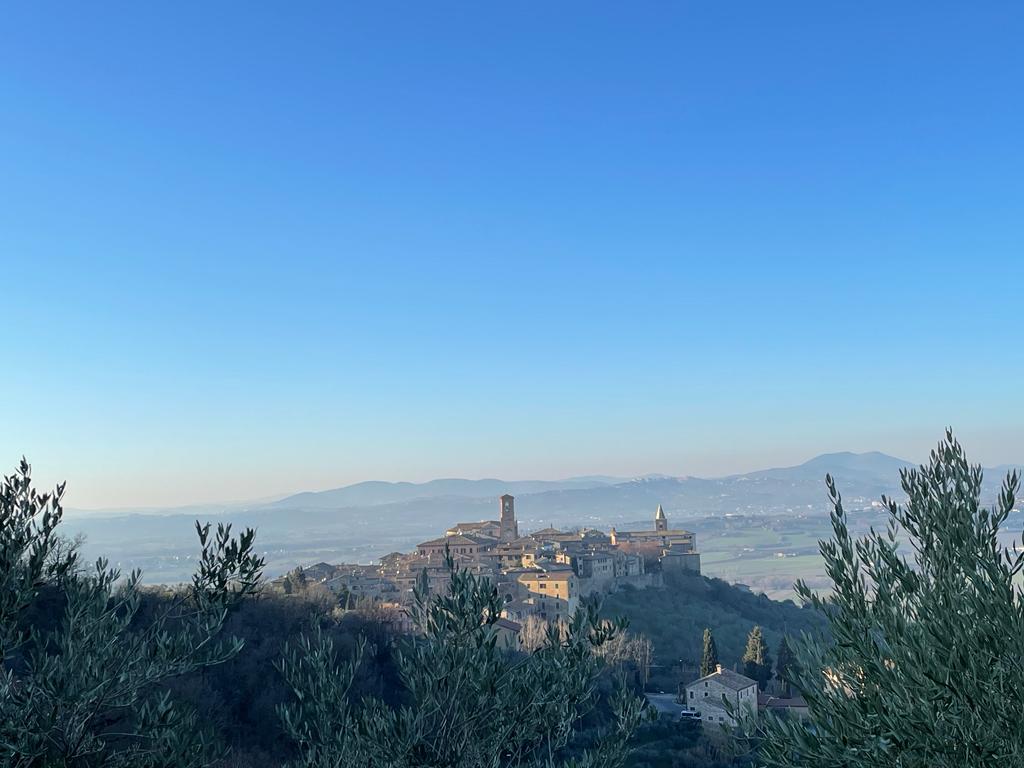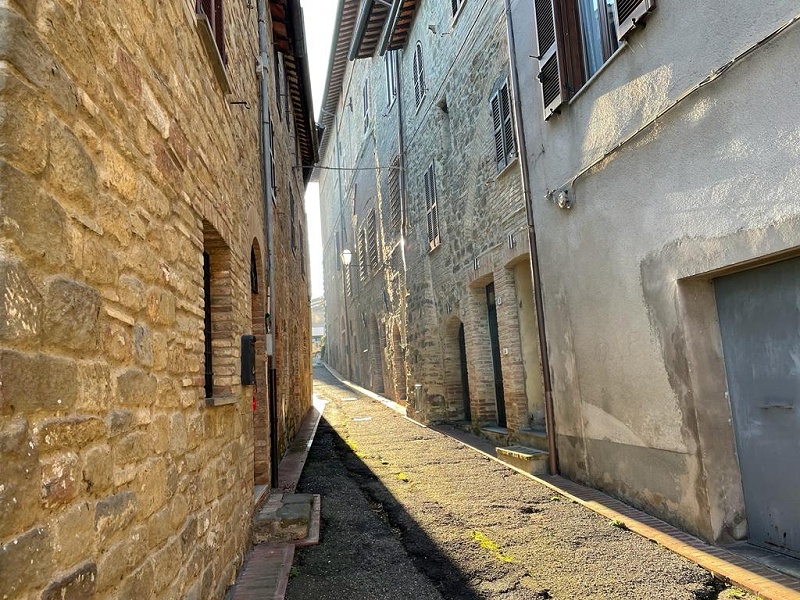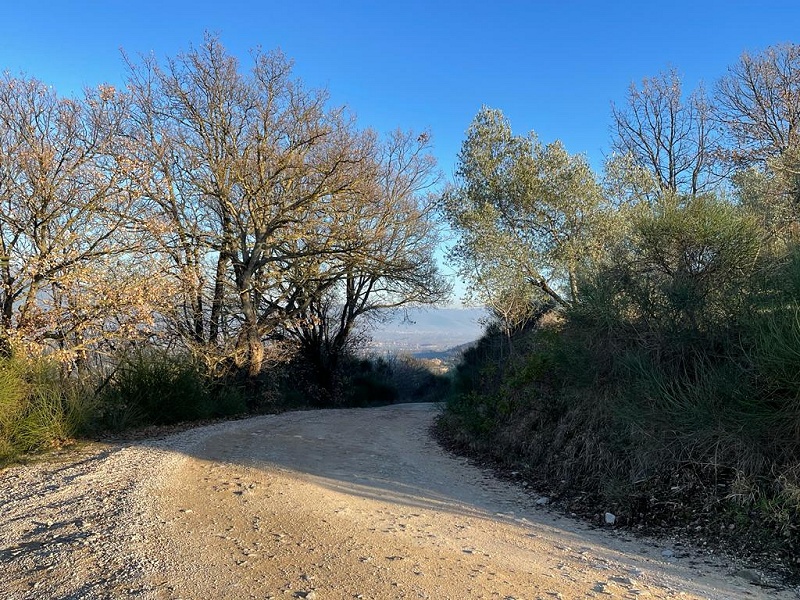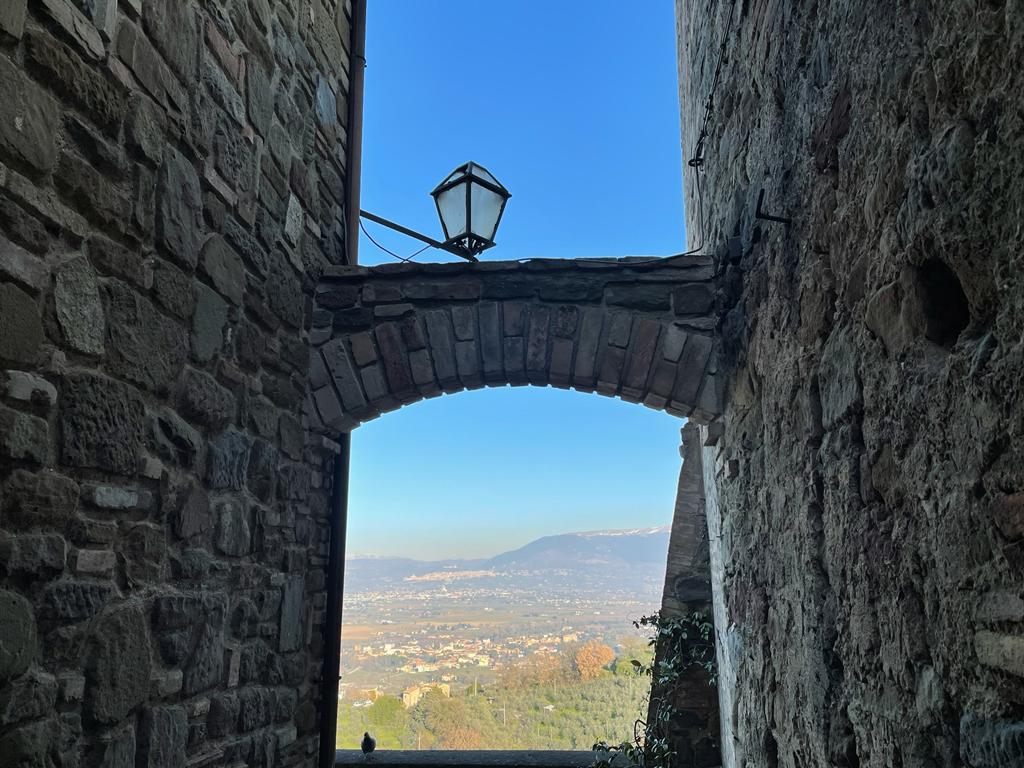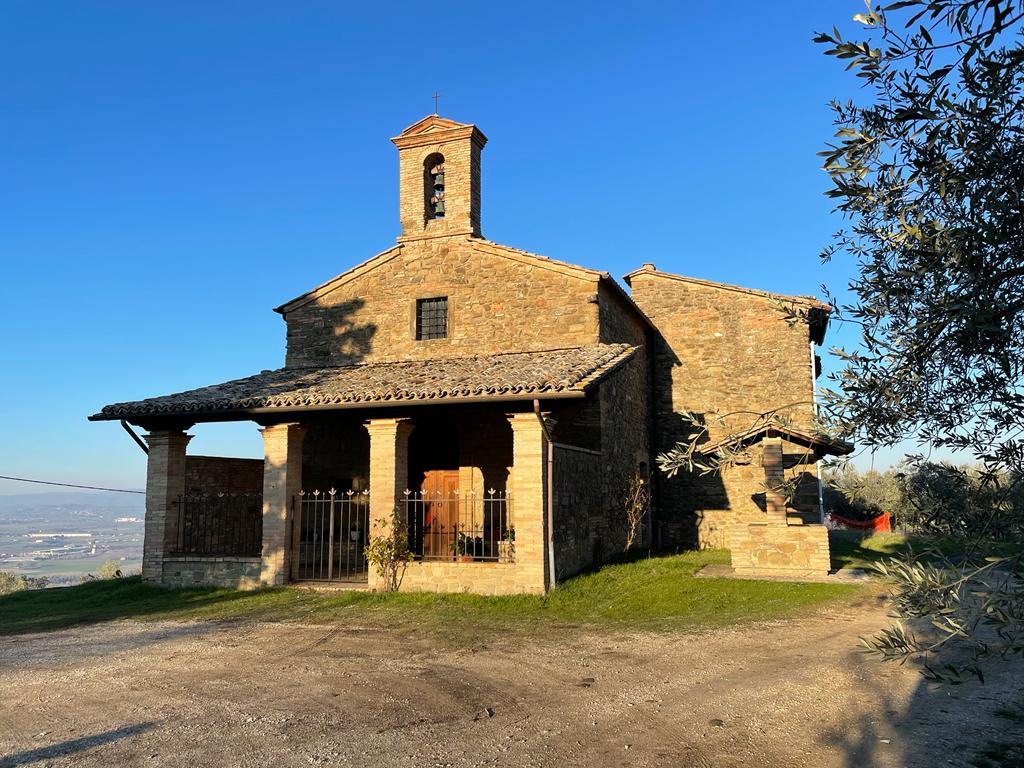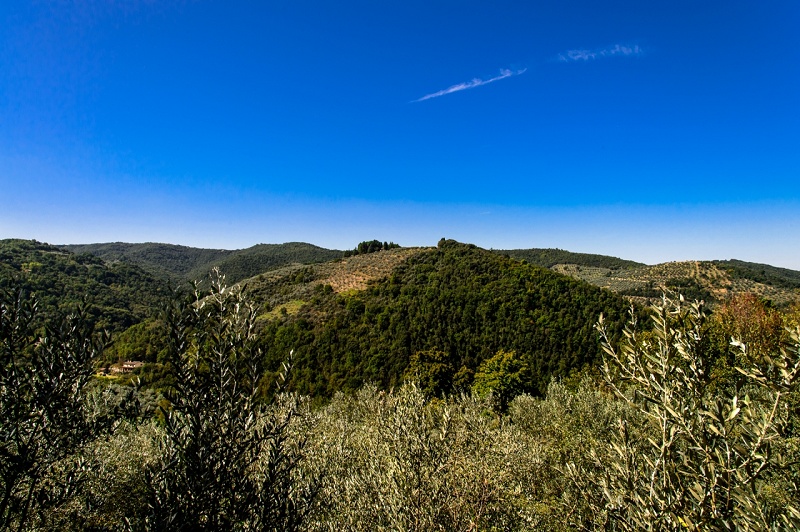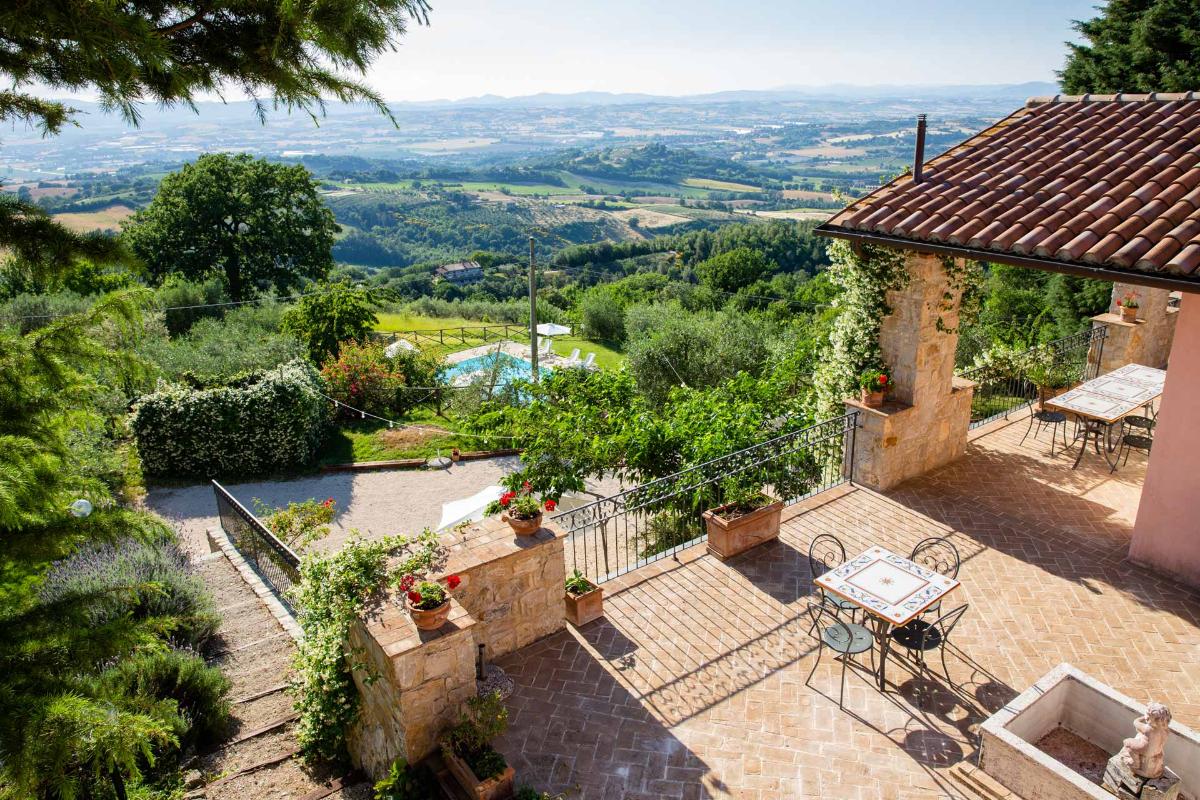dua
| Start | Bettona |
| Arrive | Bettona |
| Distance | 8 km |
| Vertical Drop | 220 m |
| Travel time: | 3 hours (Trekking) – 1 hour (Bike) |
| Difficulty | easy hiking trail, intermediate bike route, the path features slight ups and downs, some quite challenging |
| Recommended bike | Mtb |
| Suitable for | Everyone, even families with children |
| Duration | 2:17 hours (trekking); 40 minutes (bike) |
A ring trail on a path with a slight vertical drop, starting from the central Piazza Cavour in Bettona (Pg) (near the starting point there’s Bettona Outdoor, ebike / bike rental and workshop, bike and hiking tours organization). From Piazza Cavour take the central Corso Marconi and ViaXX Settembre in the direction of Porta Romana and exit the Etruscan walls.
Then continue among the olive trees, along the 5 Cerri road up to the crossroads with via Montemerlino on the right, where you start to walk on a dirt road, admiring on the left Mount Subasio with Assisi and the other villages overlooking the valley; on the right Deruta and, farther, Todi can be seen. Entering the woods, the path continues on a dirt road, crosses Via 5 Cerri / SP402 and continues straight on Via Santa Illuminata,where an alternation of olive groves and stretches of wood give shape to the ups and downs of the hill, until reaches the XII century Church of S. Gregorio, one of the “Luoghi del Cuore” FAI - Italian Environment Fund.
Characteristic are the bell gable and the front porch flanked by a well. During the Middle Ages it was used as a hospital. From the Church of S. Gregorio, the path descends on the dirt road until the intersection with Via Col di Lodola. Following the same road the road reaches the Church of Sant’Onofrio, annexed to the homonymous monastery, ruled by the Cappuccini Friars Minor since 1550. The church has inside important late-Giotto frescoes (14th-15th century) and today it serves as a chapel for the monumental cemetery of Bettona.
From the Church of Sant’Onofrio continue on Via Col di Lodola until you reach Via Roma where at the end, in Largo Bruno Buozzi, you will find the best preserved section of the ancient Etruscan Walls, resting directly on a sandstone bank; then bend at right angles at the square in front of the town entrance. You pass by the Bettona belvedere, facing Perugia, which embraces a wide panorama that goes from Mount Subasio to Lake Trasimeno. You enter the historic center of Bettona from Porta Vittorio Emanuele, which still retains the ancient wooden door, to arrive, along via Santa Caterina, up to Piazza Cavour.
In the historic center of Bettona, near the route, it is possible to visit:
- Church of San Francesco
The church of San Francesco is a XII century building. Inside we can admire the main altar with stuccoes from the 1500s. The altarpiece with a painting from the Cortonese school of the seventeenth century, depicting the crucifixion with Mary Magdalene, San Crispolto, San Francesco and the brothers of the Confraternity of Death. Above we can admire the Eternal Father. In the left altar we find a wooden crucifix for the excavation of Good Friday. In the right altar, instead, we find the seventeenth century Madonna Addolorata. On the vault, tempera that "Pinse Giuseppe Barbadori all’età di 24 anni, 1808" (painted at the age of 24 by Giuseppe Barbadori).
- Museum of the town of Bettona and the Pinacoteca
The Museum of the City of Bettona is housed in the Palazzo del Podestà and in the Palazzo Biancalana, a neoclassical style noble residence. The museum collection includes two sections: the archeological section and the painting gallery.
The archeological section of the Museum opens the exhibition itinerary giving evidence of the origins of the territory. Among the most important works there is the magnificent Aphrodite marble head of the mid-imperial age. Numerous Etruscan finds are preserved: burial markers, ceramics and rare examples of boundary stone (tular). Gold and other finds discovered in the tomb of Colle which was unearthed in 1913 are displayed in the Umbria National Archeological Museum in Perugia.
The paving works of Piazza Cavour have unearthed an ancient monumental well dating from the late fifteenth century; it is a circular structure of blocks of square sandstone; the outer diameter to the square level is of 6.40 m. Also interesting are the remains of underground walls and a stretch of roadway from medieval times.
The itinerary continues with the Pinacoteca, an artwork collection started in 1904. It occupies the Palazzo Biancalana noble floor and the hall of the 13th century Palazzo del Podestà. The Picture Gallery houses about sixty artworks, mostly paintings, ranging from the 13th century to the 19th century. Worthy of note are the Sant'Antonio da Padova and the Madonna della Misericordia by Pietro Vannucci known as Perugino, two precious 14th-century illuminated choirs , the Archangel San Michele by Fiorenzo di Lorenzo, the Adoration of the shepherds by Dono Doni, the Madonna In glory and saints by Jacopo Siculo, a tabernacle with Christ and the Evangelists attributed to Domínikos Theotokópoulos better known as El Greco, Saints Peter and Paul by Giuseppe Ribera called Spagnoletto. The collection is completed with heterogeneous artifacts of considerable interest, including scagliola and ceramic materials and interesting examples of sculptural production, such as the polychrome wooden crucifix attributed to Agostino di Duccio and the Saint Anthony in glazed terracotta from the Della Robbia school.
Recently, the very prestigious bust of Antonio Canova has been added to the museum collection, a self-portrait that the famous artist made in 1812 and which was found in Bettona in 2016.
- The Church of Santa Maria Maggiore
It is the mother church of the territory of Bettona. Its origins date back to the dawn of Christianity: according to tradition it stands on the house of the first miracle of San Crispolto.
In 1225, it was enlarged and a next restoration gives it to us in its current neoclassical aspect. Of the ancient Roman-Gothic church, just the chapel of S. Rita remains. The apse was frescoed, in 1939, by the futurist painter Gerardo Dottori. The main altar is adorned with a ciborium finely made by Cruciano Egiduzio from Bettona in 1590. Various works from S. Maria Maggiore enrich the Museum of the City of Bettona. In 1797 a collegiate church was built next to the church thanks to the sale of the properties of the four brotherhoods and three rural churches.
- S. Andrea Oratory
The oratory of Sant’ Andrea share the same square of the church of Santa Maria Maggiore and it was built between the XII and XIII century: of modest size, it was characterized by a cross vault; the Venerable Confraternity of Sant’ Andrea used to meet here, they also managed the nearby hospital and took care of the burial of the dead in the front garden.
The facade was originally decorated with a painting depicting the “Giudizio Finale”, today just few traces remain near the bell tower. The oratory was completely restored between the 17th and 18th centuries, with the elimination of the cross vault and the addition of the Baroque main altar.
- Church of San Crispolto
The church of San Crispolto was erected by the Benedictine monks at the beginning of the 13th century to preserve the body of the patron saint. The temple has a Latin cross shape and over the centuries it has been the subject of numerous interventions, for example, just the beautiful cuspidated bell tower remains of the whole primitive Romanesque building.
The current facade (1795-1797) is the work of the Roman Antonio Stefanucci, a pupil of Vanvitelli; near the main altar we find a canvas of 1590; the organ is the work of Cianciulla Romani from Cortona; the bust of the saint is in silver-plated copper from the early 18th century. In the left transept there is a pictorial cycle of 36 works depicting the legend of San Crispolto, copies made in 1797 by Stefano Notari; the much more precious original cycle, which decorated the central nave was attributed to Cesare Sermei from Orvieto.
